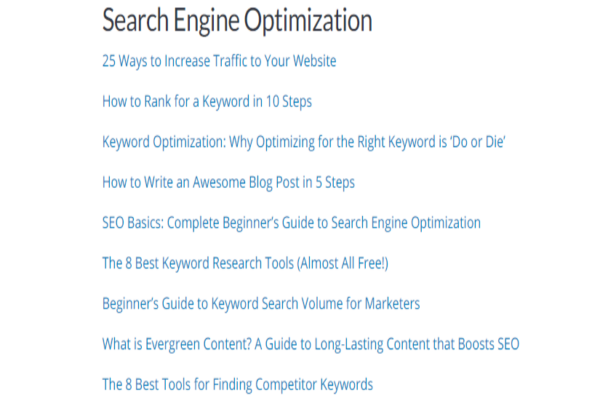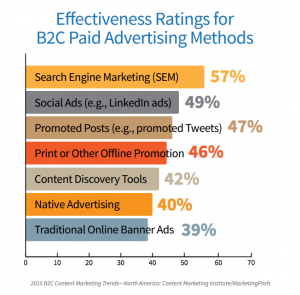Discussions about SEO have become so advanced that some important parts of SEO are being neglected. Silo structure is a case in point.
The grandmaster of SEO, Bruce Clay, said it better when he said: “To rank for keywords in Google and Bing, a site must provide information in a clear structure and formats that search engines understand… Siloing is not all there is to ranking, but without it, the on-page relevancy battle is lost.”
That’s right. Google and other search engines prioritize easy-to-index sites because of the simple reason that they make the work of search engines easier and keep humans happier.
But rather than wax lyrical about these, let’s put the benefits of having a silo-structured website in perspective.
SEO Benefits of silo structure
Easy indexation of your web pages
As you already know, search engine bots follow a well-known and simple indexation pattern: link paths.
According to Google:

The key message here is, “They use links on those sites to discover other pages.”
From time to time, Google crawls websites for fresh content for indexing and ranking.
Websites that are well structured and web pages dexterously linked together help Google do its work without hassle, and such websites shall be rewarded — all things being equal — with improved search rankings.
Decreased bounce rate
There have been arguments as to whether bounce rate is a ranking factor or not. But this study by Moz and another finding by Backlinko manage to establish that bounce rate and engagement time have effects on search ranking.
In any case, what we should not ignore here is a logical argument I once read from Neil Patel.
It says something to the effect that, when you keep readers long enough on your website, you tell Google that your page is what searchers are looking for and it should move it up.
To wit, if Google sends you traffic for a particular keyword and those visitors bounce back to the SERPs in a matter of seconds, it’s hard to imagine that Google has no way of knowing that.
As silo structure helps your site visitors see several other relevant articles and keep them longer, and your site will gain a lot of Google trust from their long stay.
A balanced distribution of link juice
When it comes to link-building, there is no even way of distributing it. Some pages are always more important and typically get more links. This may be your pillar page or even what is referred to as the money page.
However, link juice that flows through proper interlinking of blog posts has been proved time and again to benefit otherwise not-so-important posts.
For instance, my blog post about building a fitness blog is just one in a series of building successful blogs. It got to page #1 on Google within six weeks without any external links to it, but it benefitted really well from link juices that come from other pages.
Silo link structure allows for a less stressful way of distributing fine link juice to several pages at a stretch.
Building silo structure
Start with keyword research
This sounds obvious, but I’m not just talking about keyword research. This is to plan your topic cluster properly before you get knee-deep into the site structure.
We are in the age of topic clusters, where one major page acts as the pillar for multiple content pages and those pages link to one another as well as the pillar page.
Before you write any article (how much more of developing a whole silo), you should do your keyword research and gather a list of related content that can form a silo.
Another thing you will want to look at when doing this is the keyword difficulty (KD) of each keyword.
Unless you are a big company or you have a sizable budget for SEO, I will advise you to weed out keywords with high KD when doing this.
Website theming
We spoke about keyword research, and this is where you will use it.
In developing your site architecture, build the structure according to the themes of the topic clusters you created during your keyword research.
Take a look at the graphic below:

Look at it this way. The first picture here has three categories (silos), each of these has three sub-categories (sub-silos) and those three sub-categories, too, have sub-categories, all properly linked together. This stands for a well-structured website with related topics grouped together in one place — to the delight of both search engines and humans.
But the second one has a flat structure. It represents a website that doesn’t have a well-grouped silo of topics. And neither search engines nor humans will enjoy crawling them.
If you are creating a blog around content marketing, for instance, according to the image representation of silo structure above, your theming would look, for example, something like this on paper:
Homepage
Silo #1:
Theme: Email Marketing
Sub-categories:
- How to Write an Email Subject that Gets Opened
- Tested and Proven Techniques to Build Email List
- 15 Examples of Email CTAs You Can Copy
Silo #2:
Theme: Content writing
Sub-categories:
- How to Properly Place Keywords in Your Article
- How Expert Content Writers Beat Writer’s Block
- 30 Novel Ways to Get Content Ideas
Silo #3:
Theme: On-page SEO
Sub-categories:
- Here is Why You Must Listen to Yoast SEO
- How to Structure Your Blog Content for SEO
- Why Internal Linking is Crucial to Your SEO Success
Can you see that?
Take a look at these three visual representations of silos from WordStream:



Notice how each silo has several sub-silos.
WordStream ranks for any of the keywords in all of those categories because they are properly knitted.
As you can see, this is easier to navigate than the one that looks like the jellybeans in the jar below.

Photo credit: Bruce Clay
Build virtual silo
Virtual silo is about cross-linking pages in order to show search engines that they are related, and ensuring that each page in a silo also links back to the pillar page.
It has many purposes, topmost is the ability to deliver powerful link juice, as we’ve discussed earlier.
Typically, the more links a site has, the more it ranks on search SERPs.
And note that a physical silo is not a getaway from a virtual silo. Nothing can replace in-content cross-linking.
Virtual silos are, therefore, the most important of silo structures that even a website that has only virtual silos without physical silos can still have the relevancy of a silo-structured website.
To build a virtual silo, follow these simple steps:
- Create at least three blog posts around a chosen keyword
- Link every single blog post to another one under that silo
- Your blog posts under the silo should link to only that silo
- Every post must link back to the pillar page
- Repeat this on every silo you have
A few other things you should optimize your site for
We know that a good SEO campaign involves intensive keyword research, writing in-depth articles around those keywords, optimizing your articles for search engines, working your on-page SEO, getting backlinks, and getting your site structure right, among other things.
But there are other areas of getting results from search engines that are not very pronounced.
Let’s take a look at some of them.
Optimize for Voice Search
As far as I can see, written articles are not going away anytime soon but ways of searching are taking new forms.
Voice search that used to be a thing of necessity employed when individuals felt too lazy or too busy to type is fast becoming the norm.
In fact, Campaign Live found that 50 percent of searches in 2020 were conducted using voice-control assistants.
Do not buck this trend.
Blog frequently
Even as the leanings towards video content continue to surge, texts are not going away anytime soon. A finding by Impact found that 77% of Internet users regularly read blog posts.
Neil Patel now produces more podcasts than written content, he still finds a way to blog every week.
The reason for this is not far-fetched. It has been proven over and over again that businesses that blog frequently generate more leads than the ones that do not.
In this article, Neil explains why he spends a lot of money creating podcasts even though Google won’t rank it and also points to the fact that he writes a blog post every week.
To outdo your competitors, compete by updating your site with fresh blog posts from time to time and see how far you stay ahead of the pack in the SEO game.
Copywriting
You may get your SEO absolutely right and get Google to deliver prospects to your website in droves, but there would be absolutely no profit if you can’t propel them into taking action.
Most times, the distance between a prospect clicking the purchase button and walking away is as long as a well-written copy.
When a copy on your website tells a prospect that a solution he/she — and not someone else — is looking for is in taking a particular action on your website, clicking becomes irresistible.
As such, don’t do SEO without placing emphasis on copywriting. If you can hire expert copywriters at the moment, you can start by enlisting the service of some blog writing software, as some of them are completely free.
A backlink is still the most important external ranking factor
Bear in mind that a lot of algorithm updates have been made by Google in order to raise the bar of search rankings. But in spite of many years of updates, backlink still takes a central stage in the SEO world.
It doesn’t look like this would change anytime soon. But while building links, be strategic and focus strictly on white-hat link-building strategies as other link-building schemes will get your website penalized.
Conclusion
The race to the first position on Google is a bloodbath, and if you read this article to this point, it’s because you can’t take chances.
What I want you to understand is that silo-structure alone cannot make your site rank, but without it, you are unlikely to go far. Even if you have been concentrating your efforts on several other things, remember that ranking signals are in the hundreds, and anything that can give you more advantage is a competitive edge and it’s worth implementing.
Digital & Social Articles on Business 2 Community
(33)




